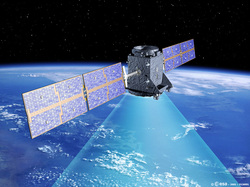LightSquared CEO Sanjiv Ahuja filed a petition to the Federal Communications Commission to allow the use of its low-power satellite frequencies for terrestrial-based 4G Internet networks.
The highly controversial spectrum could interfere with GPS signals, LightSquared’s opponents claimed. Yet, LightSquared hopes to take advantage of Obama’s mobile broadband program aimed at rural markets. If the petition is approved, it would open billion-dollar worth of revenue streams for the embattled satellite carrier. If the FCC approved the petition, cell site carriers do not have to bid for new frequencies and act as satellite broadband resellers instead to serve marginalized areas. The cost savings for cell site operators could be as much as 50%.
Supporters of LightSquared are pressuring Senators Amy Klobuchar and Al Franken to get the Senate to convince the FCC to approve the petition. They are citing the cost savings of Best Buy, a LightSquared client, to emphasize the economic benefits of using the frequency spectrum in terrestrial 4G networks.
The waiver approved by the FCC last year required the satellite communications carrier to prove that its spectrum will not interfere with GPS signals. GPS devices can reportedly process low-power satellite frequencies assigned to LightSquared, which can cause big problems for various industries that rely on GPS data. GPS devices need to have enough sensitivity to detect radio waves from four or more satellites at once. Terrestrial broadcasts of almost any strength is believed to make current GPS receivers less reliable.
Related Satellite Communications Stories:
The highly controversial spectrum could interfere with GPS signals, LightSquared’s opponents claimed. Yet, LightSquared hopes to take advantage of Obama’s mobile broadband program aimed at rural markets. If the petition is approved, it would open billion-dollar worth of revenue streams for the embattled satellite carrier. If the FCC approved the petition, cell site carriers do not have to bid for new frequencies and act as satellite broadband resellers instead to serve marginalized areas. The cost savings for cell site operators could be as much as 50%.
Supporters of LightSquared are pressuring Senators Amy Klobuchar and Al Franken to get the Senate to convince the FCC to approve the petition. They are citing the cost savings of Best Buy, a LightSquared client, to emphasize the economic benefits of using the frequency spectrum in terrestrial 4G networks.
The waiver approved by the FCC last year required the satellite communications carrier to prove that its spectrum will not interfere with GPS signals. GPS devices can reportedly process low-power satellite frequencies assigned to LightSquared, which can cause big problems for various industries that rely on GPS data. GPS devices need to have enough sensitivity to detect radio waves from four or more satellites at once. Terrestrial broadcasts of almost any strength is believed to make current GPS receivers less reliable.
Related Satellite Communications Stories:

 RSS Feed
RSS Feed